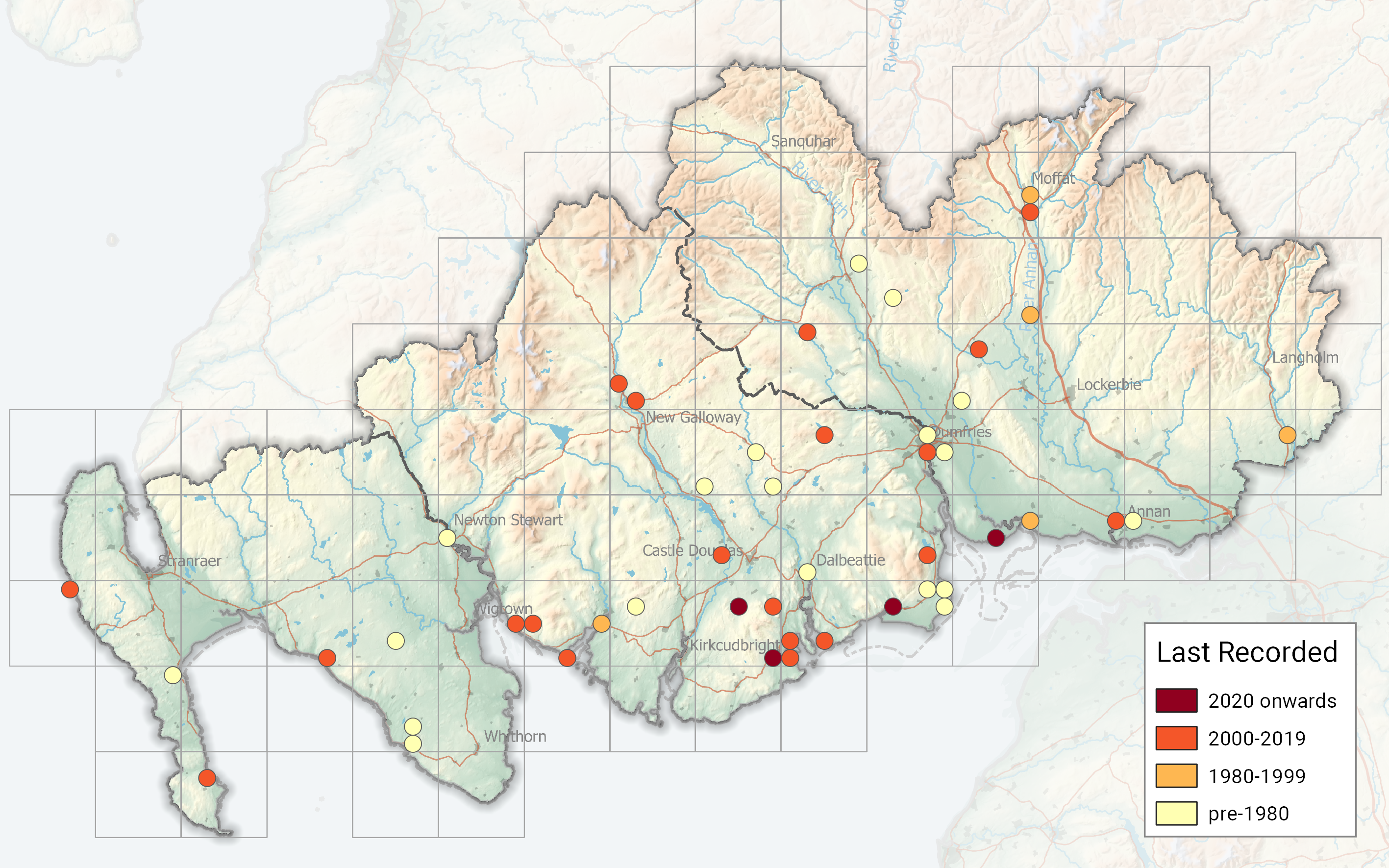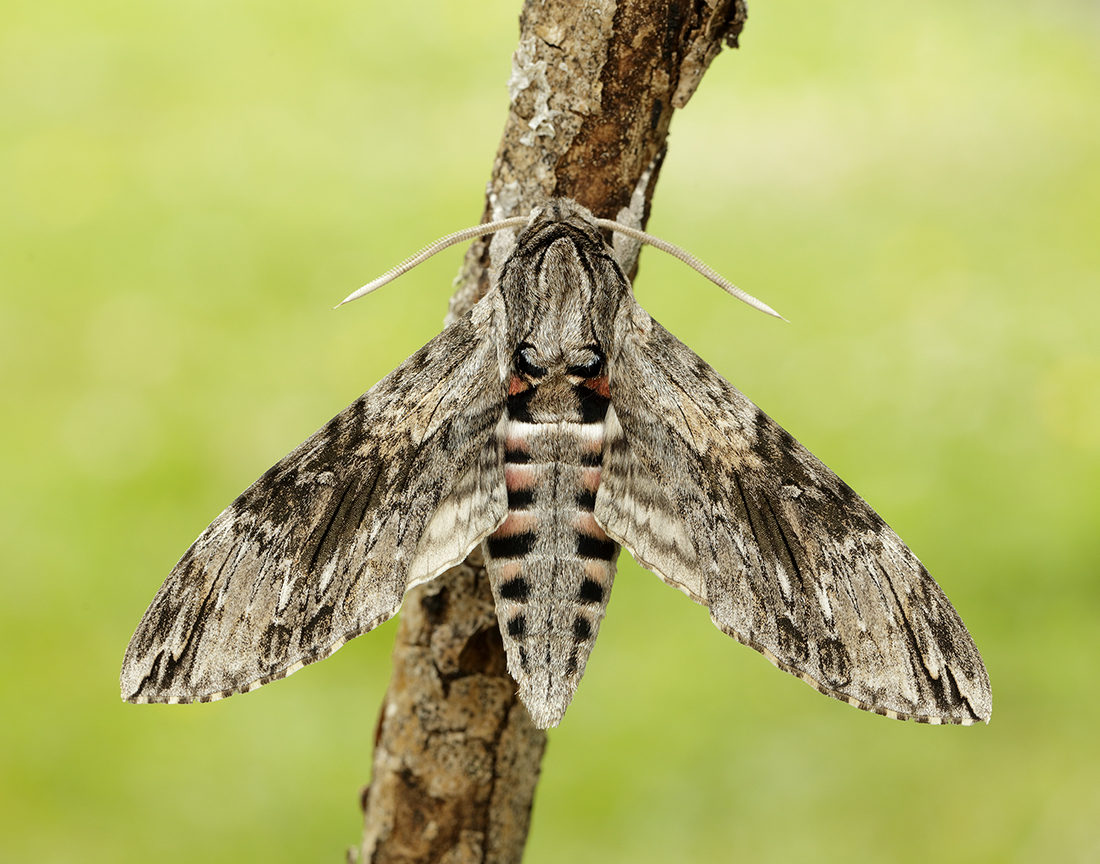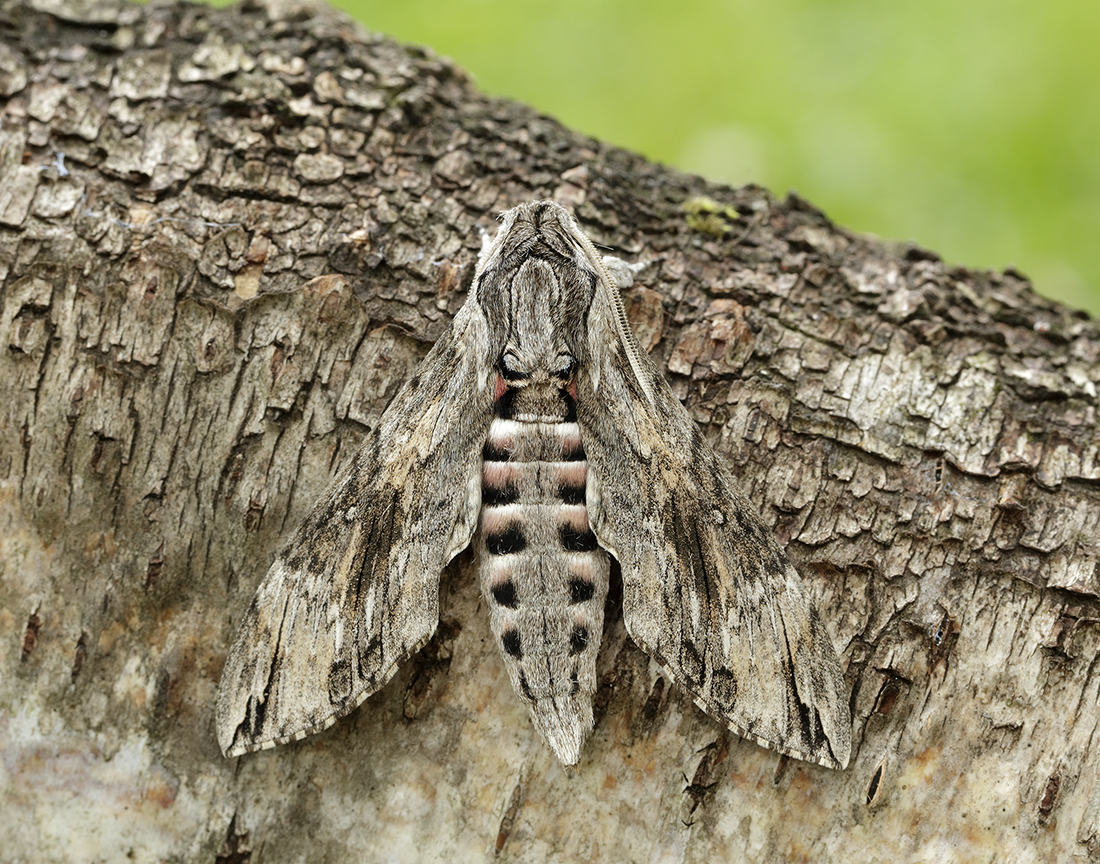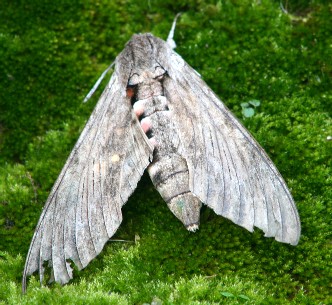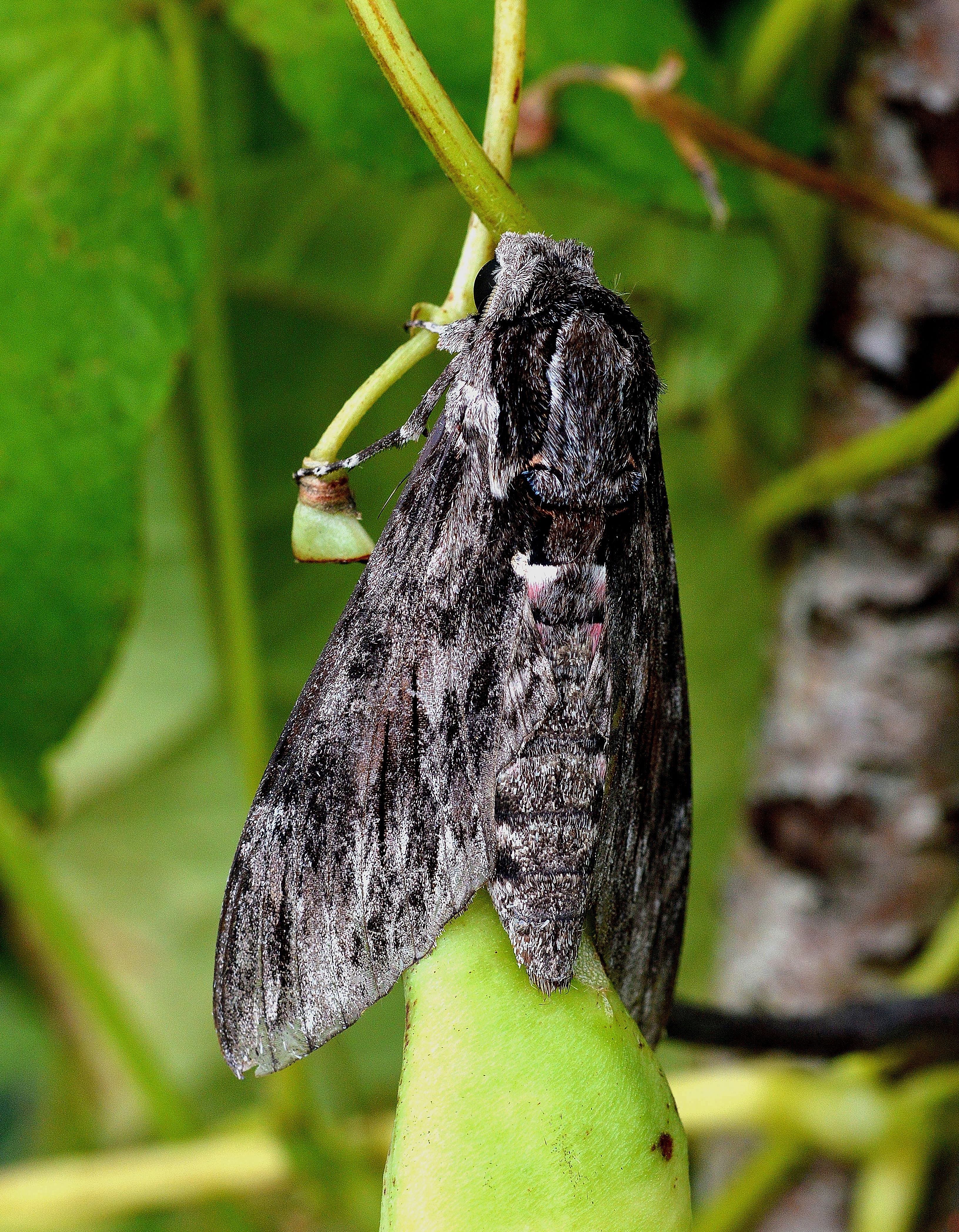Identification
Distinctive – the only other similar hawk-moth is the Privet Hawk-moth which has not been recorded in Scotland.
Recording Method
Attracted to light. Also feeds at dusk on flowers such as Nicotiana
Life cycle
Unable to overwinter. Larvae are occasionally found in Britain. Pupation takes place underground.
It has an extremely long proboscis that enables it to feed at flowers that no other moth occurring in the British Isles can reach. In fact, Service quotes the Scented White Tobacco Nicotiana affinis as one of its prime sources of nectar at the bottom of its long tubular blossoms.
Larval foodplants
Field Bindweed and Hedge Bindweed.
Habitat
A wide variety of habitats.
History
Lennon (1863) had not found this species common, a record from Castledykes (VC72) being the first he had ever seen. In the Transactions Lennon relates how a little boy had found one in a Castledykes garden, which he took home alive for the purpose of seeing its eyes by night, about which he had heard so much. Robert Service (1880) recalls how he was handed a box with a freshly dead Convolvulus Hawk-moth in it by the gardener at Edenbank (VC73); he also had one from this same place in 1877.
In September, 1882 one was found in a grocer’s shop in Dalbeattie, and went into the collection of J. J. Armistead of Douglas Hall, with another also caught in September by MacAdam and sent to his brother in Haltwhistle, Northumberland. Robert Service (1892) recorded the next occasion, which was of a battered specimen captured on St Michael Street, Dumfries in early September, 1891. Gordon found one at Phlox drummondi on the 29th August 1894 at his home in Corsemalzie, Wigtownshire. Service then recorded three more in August 1895 from around Dumfries, and another was sent from Annan to Service by William Wright in 1898.
From 1900-08 eight more were found, two in Dumfriesshire, one in Wigtownshire and the rest in VC73. Three appeared in 1917, whilst during the 1940s seven occurred and just one in the 50s and two in the 60s.
During the 1990s seven more occurred, whilst in the first decade of the 21st century eleven have been recorded. All of these where recorded referring to adults except for a record of three larvae which were found in August 1900.

